| |
| |
 |

|
Trip to Turkey September 2004
|
 |
|
|
| |
| |
Thursday, September 9, 2004
We woke to the call-to-prayer, dozed and listened to the morning birds, dressed in time to start breakfast at 8:00. After breakfast we packed and went to the ferry terminal. We walked around the shore and watched the cats and their fishermen who threw little treats to them.
Marmara is where marble comes from: the white rocks, white beach sand, and brilliant turquoise blend of the blue sea washing over the white white sand. As we drove down the coast we were surprised at how public and accessible all the beaches were. It made me grateful that Turkey has not sold off her national treasures for a piece of bread today.
We were headed to Troy for our first in-person introduction to Hittite ruins. Along the way we stopped at a semi-permanent wooden melon stand with a shade roof and open sides. The old man was selling only two crops: Turkish melon, kavun ("kah-oon") and watermelon ("karpooz"). We bought one of each.
While watermelon has always been my favorite, Turkish melon is a close second. The nearest approximation in taste to melons I have had before would have to be the taste of the Juan canary melon. The color of the Turkish melon is a paler orange than cantaloupe, but not as yellow as Juan canary.
Along the route and road to Troy, I saw many of my favorite and familiar trees, shrubs, and flowers, including pink silktree (mimosa), marigolds, rose of Sharon, plus Pinus Pineae (true pine, Turkish pine).
|
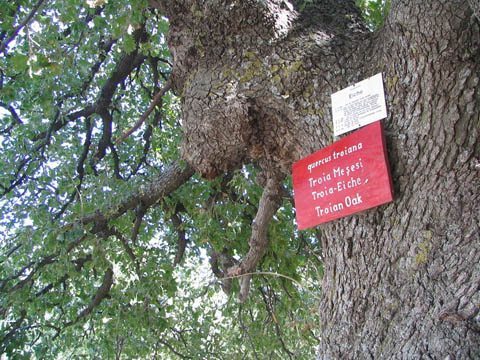
|
...and there we were, standing on the ground of Troy.... You would think that such a famous, historical, and legendary place would have more than just a rubble of rocks in a mound. Perhaps a small brochure, a booklet, a map, guide, or chart of the excavated area would be available; either included with the entrance fee, or for a small additional price. No such luck. In fact, there were a few handicraft stands outside the entrance to Troy, but none of the items for sale had any direct relation to either the historical or legendary Troy. |

|
There were also no guard rails (there was one place with a wooden staircase to a small overlook and the steps were falling apart), no guards, no knowledgeable tour guides, no spotlights. There were a few large signs explaining the different excavation levels of Troy, but they weren't placed anywhere near where they could have been helpful for visual comparison. There were some few indications in one place of which rock was original and which was restored, but a lot was left to guesswork. Whatever smaller items had been found (and not looted) in Troy had been removed to museums without so much as a picture in their place.
|
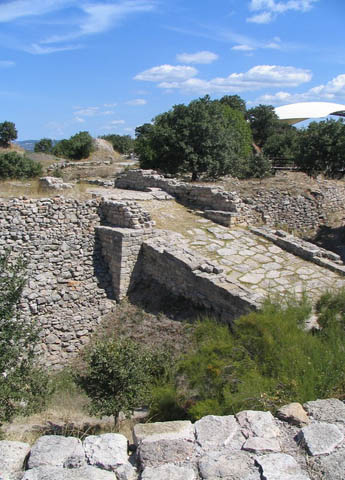 
|
There were some people who appeared to have been hired to impersonate archaeologists who were sifting through and then returning the same bits of soil over and over.
|
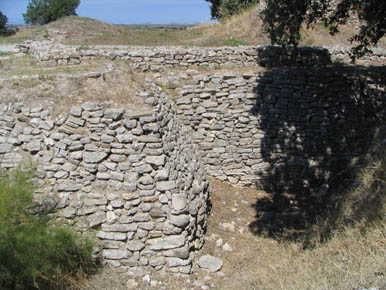 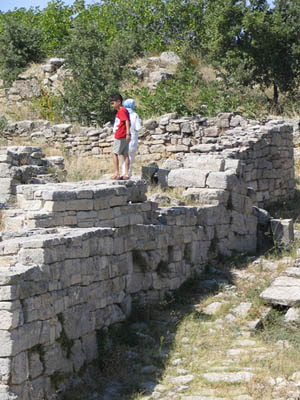

|
The most exciting piece of our exploration of Troy was about 400 feet away from the main part of the excavated site. Down a little-walked path, we found a tiny ravine and a rock with an entrance hole and a stream running through it. This was (at different times) a fish hatchery, a swamp garden, and a water well for the city of Troy. The beauty of this spot made me feel much more connected with the ancient people of Troy than the meaningless rubble of rocks that was part of the "regular tour". |


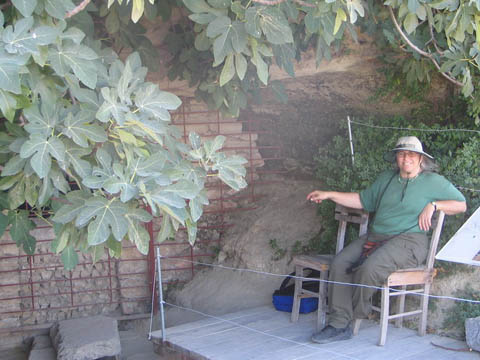
|
Now we were really "on the road", sleeping in the van... Within the next 2 days we purchased a blanket, a camping stove, some fabric we can use as curtains, and a plastic bucket we can use as a "chamber pot" (because there are no port-a-potties as we knew them from boating stores in the USA, in Turkey).
|
|
|
| |
|
|
| |
| |
Created: November 15, 2004
Updated: November 21, 2004
|  
|
|
|
| |
|
|